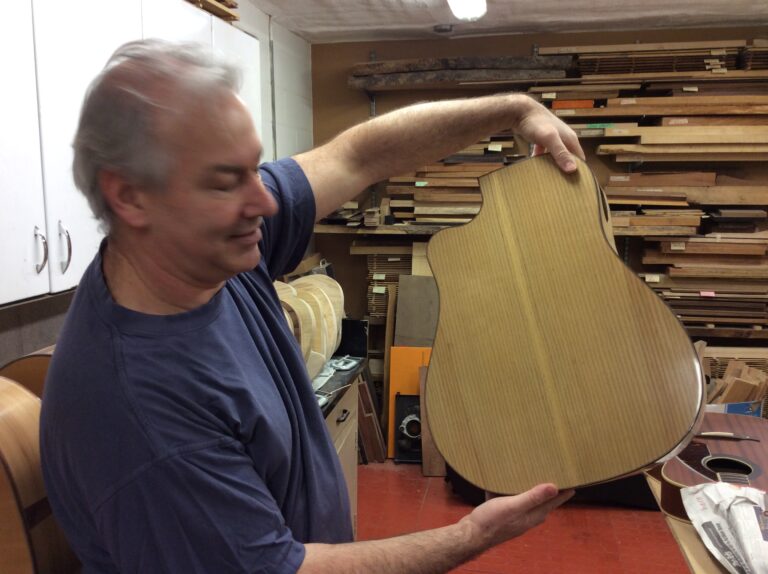Harold Dickert, Luthier Craftsman
By Glen Brown
From the high tech, high altitude and precision world of commercial aviation pilotage to the gritty, earthbound work of an eco-sensitive landscaper, Harold Dickert’s perspective on building guitars is wide and all-encompassing. Now he is spending a considerable amount of time at his passion, which is building guitars in his basement workshop.

Dickert lives in Kilbride, a tiny hamlet in north Burlington, located on escarpment-protected land. His modest property includes a few acres of woodland. As we look out the back window of his shop into the trees, he names a number of native species, and explains how certain types are very useful for guitar construction. I’m surprised to learn that many of our native species such as Honey Locust, Ash, and Birch are great wood for building guitars.

At first thought, it seems counter-intuitive that a commercial airline pilot would become devoted to an earthy craft based on fine woodworking and intimate knowledge of tree species and wood types. The connection in Harold’s life comes from his early love for building flying model airplanes. One of his model planes is mounted in his guitar testing room. As Dickert became immersed and skilled in the methods and materials of airplane modeling, his knowledge was easily transferred to the fine details of working with guitars.
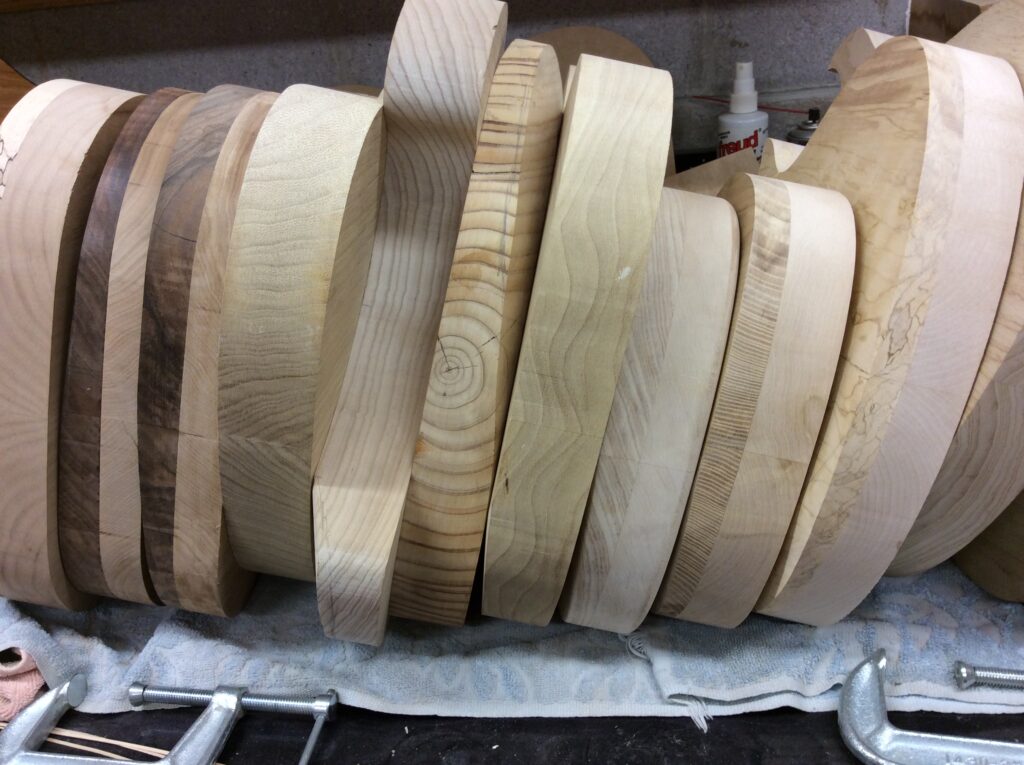
Here’s how it started. Years ago, as a teenager, Dickert came across an old and forgotten electric guitar and decided to get the thing working again. Along the way he discovered that guitar building kits were available, and before long he had bought a set of tools and was on a new journey of discovery and expression using his favourite material: wood.
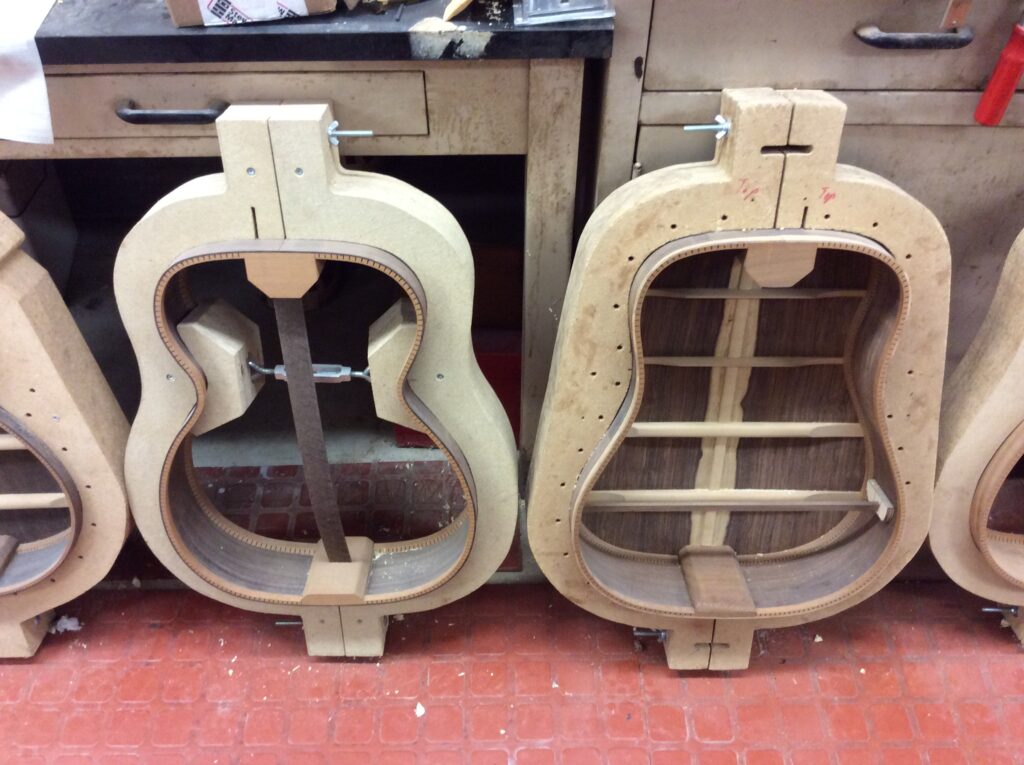
He explains to me, “The physical properties of any particular type of wood influence its acoustic properties, physical strength, flexibility and appearance. It’s my choice, guided by industry best practices, about how any particular piece of wood is used, for what part of the guitar it is suited and whether or not it is needed for chosen form, acoustic function, strength or finesse of detail.”
Dickert’s knowledge and understanding of native wood is essential to his goal of building beautiful sounding –and looking– guitars. Being able to make informed choices and being able to source his own wood are Dickert’s “secret sauce” that sets his guitars apart from all others. Much of the wood in his supply room comes from trees on his own property and other known local sources.
Being able to make informed choices and being able to source his own wood are Dickert’s “secret sauce” that sets his guitars apart from all others.
Dickert’s work and training as a landscaper taught him the importance of native species and sustainability. “Landscaping should be done from the soil up,” Dickert says, quoting his father, who taught his son to be sensitive to the way the landscaped environment should be designed. Landscaping was not just a matter of scraping the soil away and replacing plants. Choices of native plants, building healthy and complete soil, using sustainable and natural materials were key principles.
In a similar way Dickert believes that the materials chosen by any luthier should be a reflection of the maker’s personal commitment to a number of factors, such as economical limitations, sustainability and preservation of forests, preservation and restoration of native tree species, attitudes about recycling and salvaging, as well as physical properties and suitability of each kind of wood.
As we wend our way through the workshop I see shelves full of boards of various colours and sizes of wooden boards of the many species of wood Dickert uses. He pulls a squared block out of a pile and shows me the grain. “This darker wood is the outer part of the tree which is living, while this lighter wood is older and not alive.” The difference in colour is put into the design. Creative ways of cutting the boards will provide mirror-image versions of grain patterns which are then assembled.
Rows of acoustic guitar gluing templates stand in a row, neck clamps, fretboard parts, braces and jigs for shaping and gluing wood sit on the workbenches, and a huge assortment of hand tools and power tools stand at the ready. The smell of sawdust fills the air. Beautiful guitars, completed or nearly completed, hang on the walls making the tour site a smooth blend of workshop and showroom.
Dickert shows me one of his first electric guitars that used a custom source of wood for its body: an old cutting board. “If you look closely you can see I left some of the knife marks visible,” he says.
Other guitars have wildly expressive starburst patterns in the body or unique geometric patterns or images as inlays and decorations. As Dickert showed me some of his detailed inlay work and custom cutting, I found the quality of his fine detail to be impeccable and of the highest standard.
The biggest thrill for my eyes was the fine inlay work on the custom guitar being made for local bluesman James Anthony. The guitar is nearing its delivery time and soon we will have the opportunity to hear this beautiful instrument in action. Naturally Harold Dickert will want to make sure it is fully tested and every detail is taken care of.

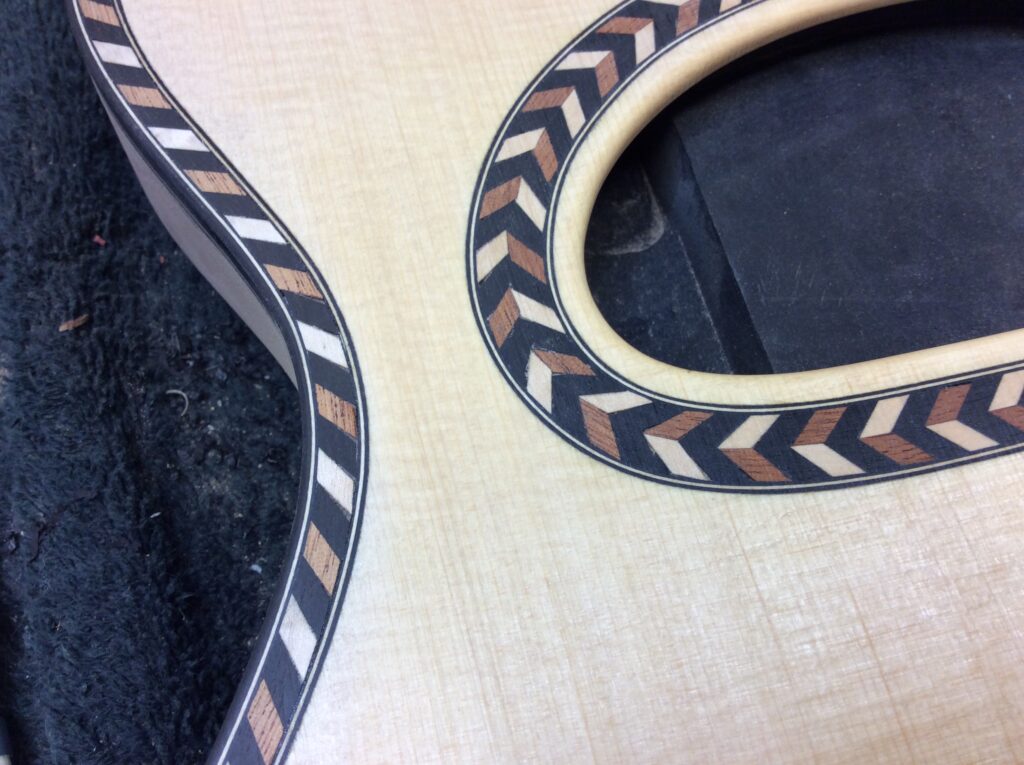
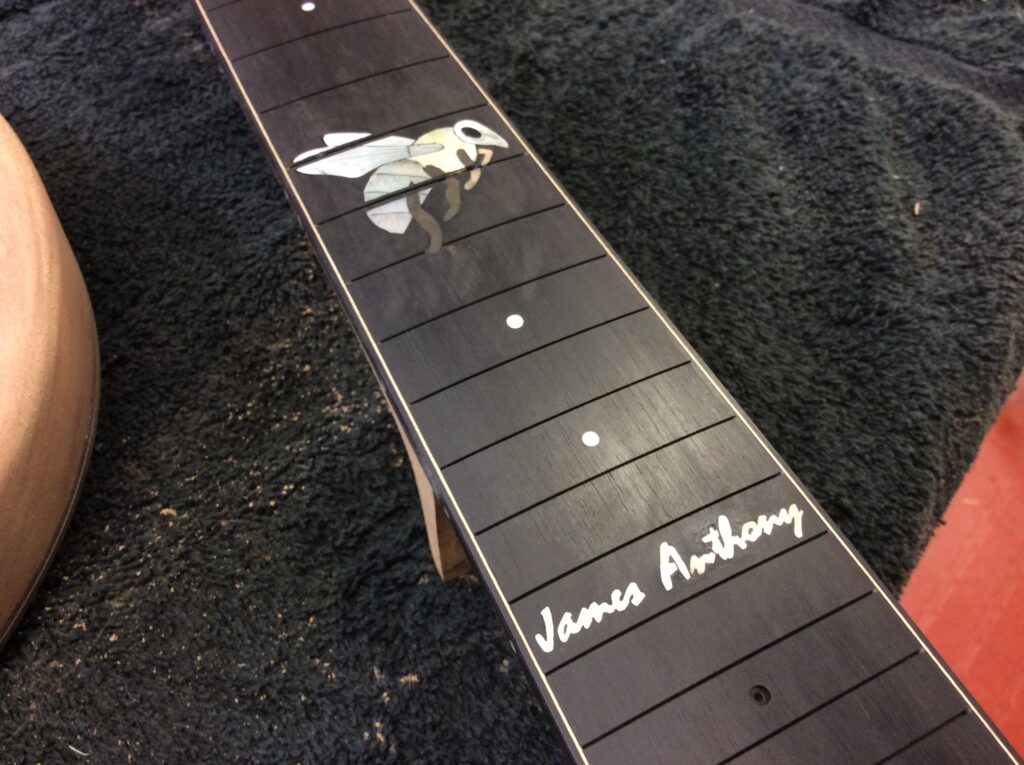

I left Dickert’s workshop feeling privileged, and wishing I played guitar so I could be a serious contender for ownership of one of these beautiful instruments. The high standards and close attention to every aspect of the instrument’s construction is what you would expect from Harold Dickert, a unique master luthier and a treasured artisan.
For more information go to http://www.dickert.ca/

